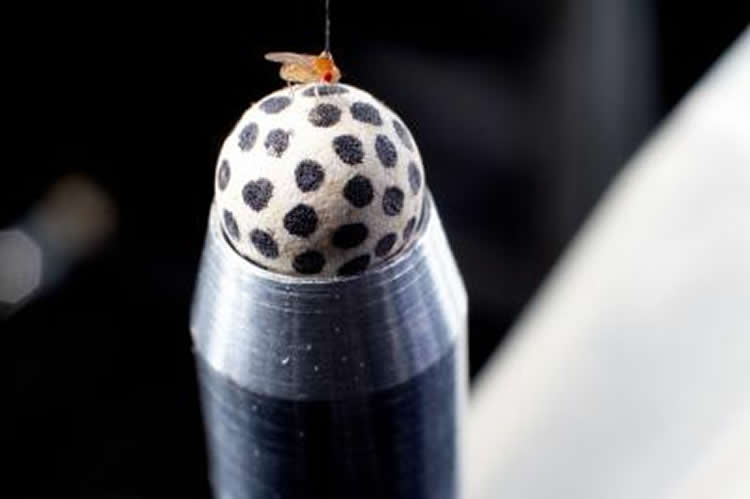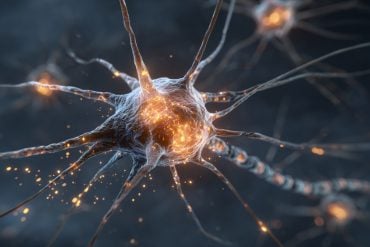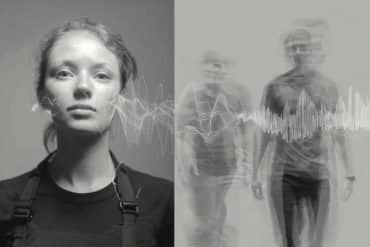Summary: Study documents the mechanism that updates a fly’s internal compass as it turns around.
Source: Rockefeller University.
Close your eyes. Turn around. Even without opening your eyes, you probably still know which direction you are facing. To better understand how brains maintain this sense of orientation, researchers at The Rockefeller University are peering into the heads of sesame-seed sized flies.
Their recent experiments, described May 22 in Nature, have identified the neural circuitry that updates the fly’s internal compass as the insect turns, the first such mechanism documented for any animal.
“Like humans and many other animals, a fly needs to find its way around,” says Gaby Maimon, head of the Laboratory of Integrative Brain Function. “Their small brains, alongside advanced methods to visualize and manipulate neural activity in flies, made it possible for us to tease out an important aspect of navigation.”
Nudging the needle
After a foraging foray, many insects return to the hive, nest, or colony. This undertaking requires an animal to keep track of its position in space, just as it would for a human commuting home or a rat in a maze. Scientists are just beginning to understand the mechanisms by which bug brains, or any brains for that matter, accomplish this.
Previous work with fruit flies identified a set of neurons that act like a compass needle, producing a rotating signal that can be used for navigation. Unlike a conventional compass, whose physical needle points towards magnetic north, the activity of these neurons represents the angle in which the fly is headed relative to landmarks in its environment, or relative to its previous heading if it is navigating in the dark.
Maimon’s team, led by Jonathan Green, a graduate student in the lab, has found a second group of neurons that move the fly’s compass needle clockwise or counterclockwise to track the fly’s turns based on the animal’s own movements.
Green first suspected that these neurons, called P-ENs, might have something to do with navigation when he found he could make a fly turn by stimulating them. Found deep within the fly’s brain, the P-ENs are interwoven with the needle neurons. When the fly turns, the two sets of neurons produce signals that move in unison, rotating left as the fly turns right and vice versa.
Tracking movements
To better understand what was going on, Green affixed the flies to a microscope platform in such a way that he could record activity directly from the animals’ brains. Meanwhile, the flies could move their legs by walking on a ball that tracks their movements.
The researchers saw that, as the fly turned, the P-ENs to one side of the compass signal became more active, nudging the signal to the left or right. As a result, the signal rotates as the fly turns. This system is precisely calibrated: The faster the fly turns, the more active the P-ENs become, and the faster the needle rotates.

This input from the P-ENs becomes indispensable in the dark. When the researchers turned off the lights and deactivated these neurons, the fly’s internal compass could no longer track the insect’s turns accurately.
“The P-ENs appear to be updating the internal compass based on the fly’s own movements, not based on landmarks in the fly’s environment–just as you maintain some sense of orientation even in a dark room,” Green says.
Working in parallel to Green and Maimon, another group based at the Howard Hughes Medical Institute’s Janelia campus, also discovered the P-ENs. Their results were described simultaneously in eLife.
Although newly discovered, this circuit for updating a fly’s representation of its angular orientation looked familiar. The way in which the P-ENs interact with the compass signal in the fly brain bears a strong resemblance to a system that studies have suggested exists in the more complex brains of rats, another animal used to study navigation.
“This similarity suggests our findings likely have relevance for understanding spatial cognition in larger, mammalian brains–including, perhaps, our own,” Maimon says.
Source: Katherine Fenz – Rockefeller University
Image Source: NeuroscienceNews.com image is credited to Mario Morgado for The Rockefeller University.
Original Research: Abstract for “A neural circuit architecture for angular integration in Drosophila” by Jonathan Green, Atsuko Adachi, Kunal K. Shah, Jonathan D. Hirokawa, Pablo S. Magani & Gaby Maimon in Nature. Published online May 22 2017 doi:10.1038/nature22343
[cbtabs][cbtab title=”MLA”]Rockefeller University “Neural Circuit That Rotates a Fly’s Internal Compass Identified.” NeuroscienceNews. NeuroscienceNews, 22 May 2017.
<https://neurosciencenews.com/neural-network-fly-navigation-6748/>.[/cbtab][cbtab title=”APA”]Rockefeller University (2017, May 22). Neural Circuit That Rotates a Fly’s Internal Compass Identified. NeuroscienceNew. Retrieved May 22, 2017 from https://neurosciencenews.com/neural-network-fly-navigation-6748/[/cbtab][cbtab title=”Chicago”]Rockefeller University “Neural Circuit That Rotates a Fly’s Internal Compass Identified.” https://neurosciencenews.com/neural-network-fly-navigation-6748/ (accessed May 22, 2017).[/cbtab][/cbtabs]
Abstract
A neural circuit architecture for angular integration in Drosophila
Many animals keep track of their angular heading over time while navigating through their environment. However, a neural-circuit architecture for computing heading has not been experimentally defined in any species. Here we describe a set of clockwise- and anticlockwise-shifting neurons in the Drosophila central complex whose wiring and physiology provide a means to rotate an angular heading estimate based on the fly’s angular velocity. We show that each class of shifting neurons exists in two subtypes, with spatiotemporal activity profiles that suggest different roles for each subtype at the start and end of tethered-walking turns. Shifting neurons are required for the heading system to properly track the fly’s heading in the dark, and stimulation of these neurons induces predictable shifts in the heading signal. The central features of this biological circuit are analogous to those of computational models proposed for head-direction cells in rodents and may shed light on how neural systems, in general, perform integration.
“A neural circuit architecture for angular integration in Drosophila” by Jonathan Green, Atsuko Adachi, Kunal K. Shah, Jonathan D. Hirokawa, Pablo S. Magani & Gaby Maimon in Nature. Published online May 22 2017 doi:10.1038/nature22343






